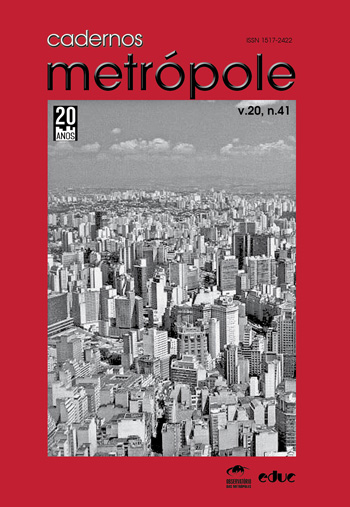Housing inequalities in the “repopulation” of the expanded downtown area of the municipality of São Paulo
Keywords:
housing inequality, repopulation, expanded downtown area, São PauloAbstract
This article discusses the long-awaited "repopulation" of the expanded downtown area of the municipality of São Paulo, which occurred between the years 2000 and 2010, driven by the mercantile logic of the capitalist urbanization. It analyzes data on real estate production aimed at medium- and high-income buyers at the expense of the demands of the low-income population. The latter is inserted in "repopulation" trends, seeking to access dwellings in slums and precarious settlements. In addition, the article shows that, in spite of the "repopulation" and demographic inversion that took place in the expanded downtown area of São Paulo, the population continued to grow in the periphery, albeit at a slow pace, maintaining the levels of household income inequalities that mark the center-periphery model.Downloads
Published
2018-04-16
How to Cite
Nakano, A. K. (2018). Housing inequalities in the “repopulation” of the expanded downtown area of the municipality of São Paulo. Cadernos Metrópole, 20(41), 53–74. Retrieved from https://revistas.pucsp.br/index.php/metropole/article/view/2236-9996.2018-4103
Issue
Section
Artigos
License
A revista não tem condições de pagar direitos autorais nem de distribuir separatas.
O Instrumento Particular de Autorização e Cessão de Direitos Autorais, datado e assinado pelo(s) autor(es), deve ser transferido no passo 4 da submissão (Transferência de Documentos Suplementares). Em caso de dúvida consulte o Manual de Submissão pelo Autor.
O conteúdo do texto é de responsabilidade do(s) autor(es).


